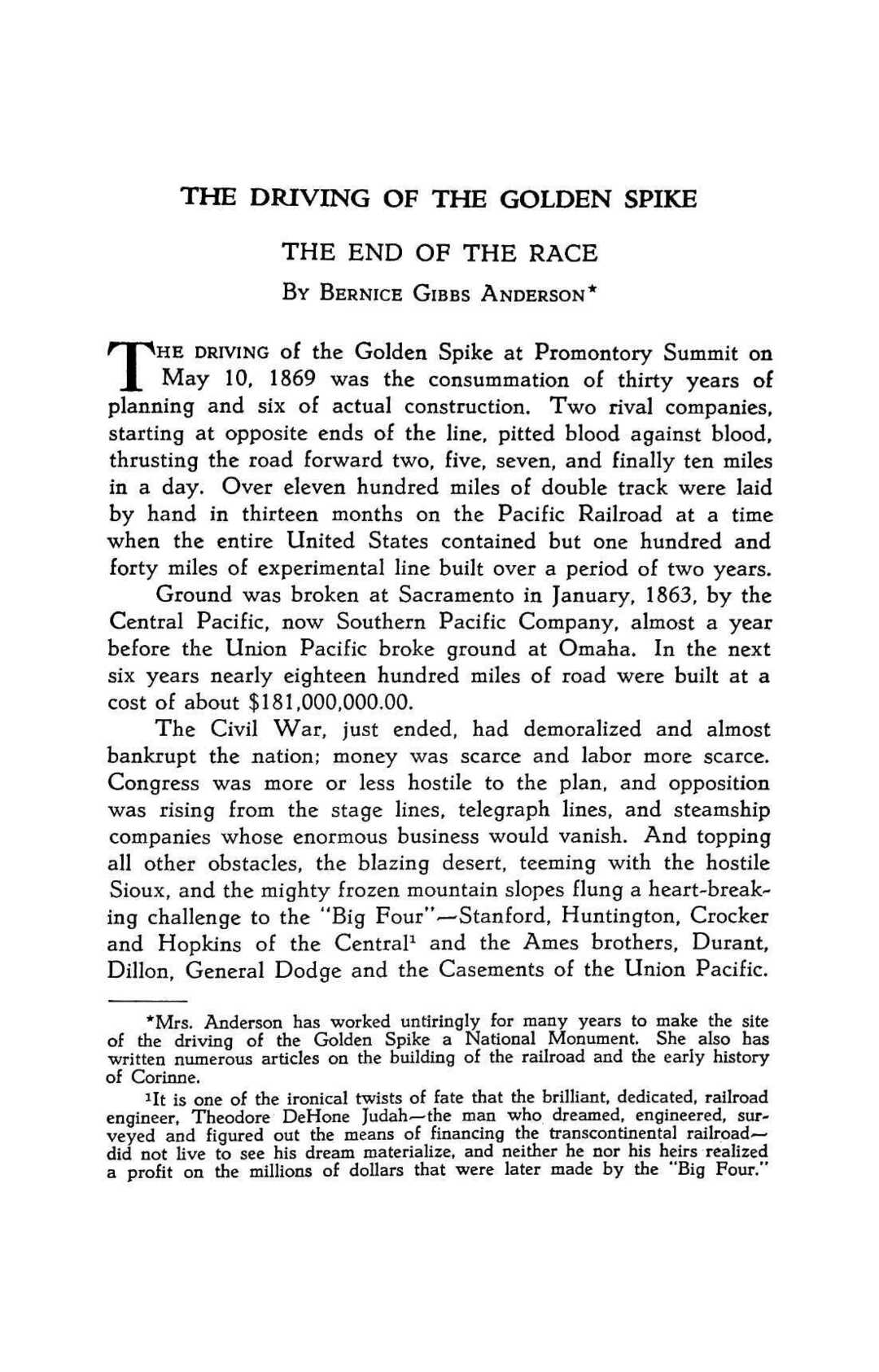T H E D R I V I N G OF T H E G O L D E N SPIKE T H E E N D O F T H E RACE BY BERNICE GIBBS ANDERSON*
T
of the Golden Spike at Promontory Summit on May 10, 1869 was the consummation of thirty years of planning and six of actual construction. Two rival companies, starting at opposite ends of the line, pitted blood against blood, thrusting the road forward two, five, seven, and finally ten miles in a day. Over eleven hundred miles of double track were laid by hand in thirteen months on the Pacific Railroad at a time when the entire United States contained but one hundred and forty miles of experimental line built over a period of two years. Ground was broken at Sacramento in January, 1863, by the Central Pacific, now Southern Pacific Company, almost a year before the Union Pacific broke ground at Omaha. In the next six years nearly eighteen hundred miles of road were built at a cost of about $181,000,000.00. The Civil W a r , just ended, had demoralized and almost bankrupt the nation; money was scarce and labor more scarce. Congress was more or less hostile to the plan, and opposition was rising from the stage lines, telegraph lines, and steamship companies whose enormous business would vanish. And topping all other obstacles, the blazing desert, teeming with the hostile Sioux, and the mighty frozen mountain slopes flung a heart-breaking challenge to the "Big Four"—Stanford, Huntington, Crocker and Hopkins of the Central 1 and the Ames brothers, Durant, Dillon, General Dodge and the Casements of the Union Pacific. H E DRIVING
*Mrs. Anderson has worked untiringly for many years to make the site of the driving of the Golden Spike a National Monument. She also has written numerous articles on the building of the railroad and the early history of Corinne. J lt is one of the ironical twists of fate that the brilliant, dedicated, railroad engineer, Theodore DeHone Judah—the man who dreamed, engineered, surveyed and figured out the means of financing the transcontinental railroad— did not live to see his dream materialize, and neither he nor his heirs realized a profit on the millions of dollars that were later made by the "Big Four."




















